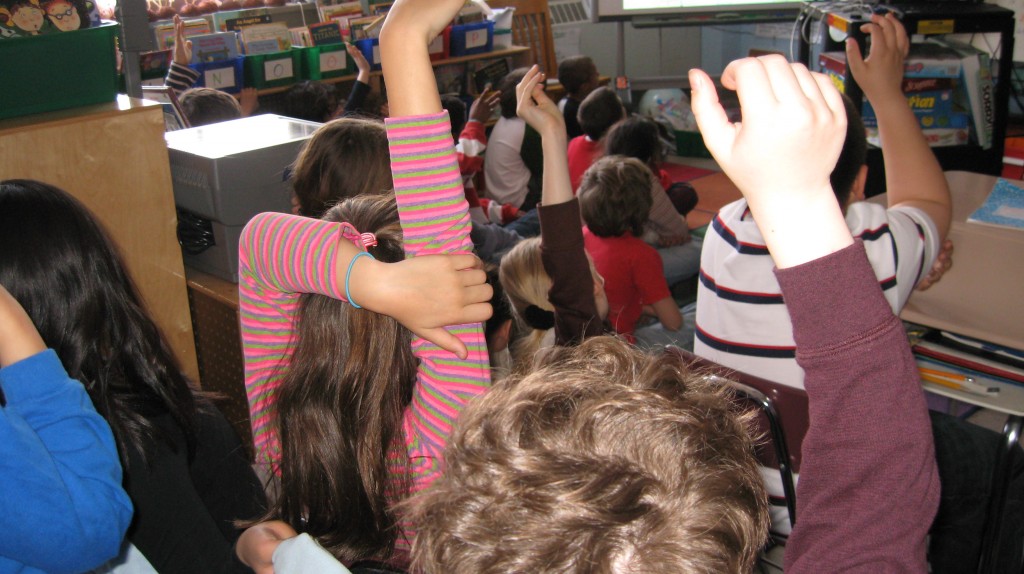 As one of the Rubin’s four Apprentice Museum Educators (here we are), one of my jobs is to visit schools before they bring their classes to the galleries. Last Friday I led my first classroom experience.
As one of the Rubin’s four Apprentice Museum Educators (here we are), one of my jobs is to visit schools before they bring their classes to the galleries. Last Friday I led my first classroom experience.
For my pre-visit I traveled downtown to an elementary school on the lower east side. That morning was difficult. I spent the subway ride frenetically going through notes only to immediately take a wrong turn and find myself lost in Chinatown. This, plus my menacing spring allergies, left me nervous, disoriented, and sneezing wildly by the time I reached the school’s lobby.
At that point things could only improve, and the class–packed with curious third-graders–made sure that they did. We explored an image of a mandala currently on display and made connections to the students’ previous experiences with Buddhism, which apparently had them believing the Buddha was everything from an environmental activist to a all-powerful emperor. I suppose there’s some truth in both. Anyway, as we slowly worked our way through the presentation, I could sense the kids’ anticipation building. A museum visit only a weekend away! The key moment, however, came at the end of the presentation during a quick slideshow of the Dalai Lama helping create (and destroy) a sand mandala.
As the sand mandala began to take shape on screen, a young boy called out (so long classroom etiquette), “It looks like the other picture we just looked at!” Suddenly, “mandala” had changed. It didn’t mean this one particular picture that the kids happened to see one day in class. Instead, it became an idea and a pattern that the students could find anywhere around them. If an artist could make a mandala out of paint and sand, why not sidewalk chalk or magic marker? Through investigating our two mandalas, the kids realized mandalas are not simply museum pieces, but concepts we can imagine wherever and whenever. On the train ride back to the museum I was no longer disoriented or nervous. I was still sneezing.
–Lewis


